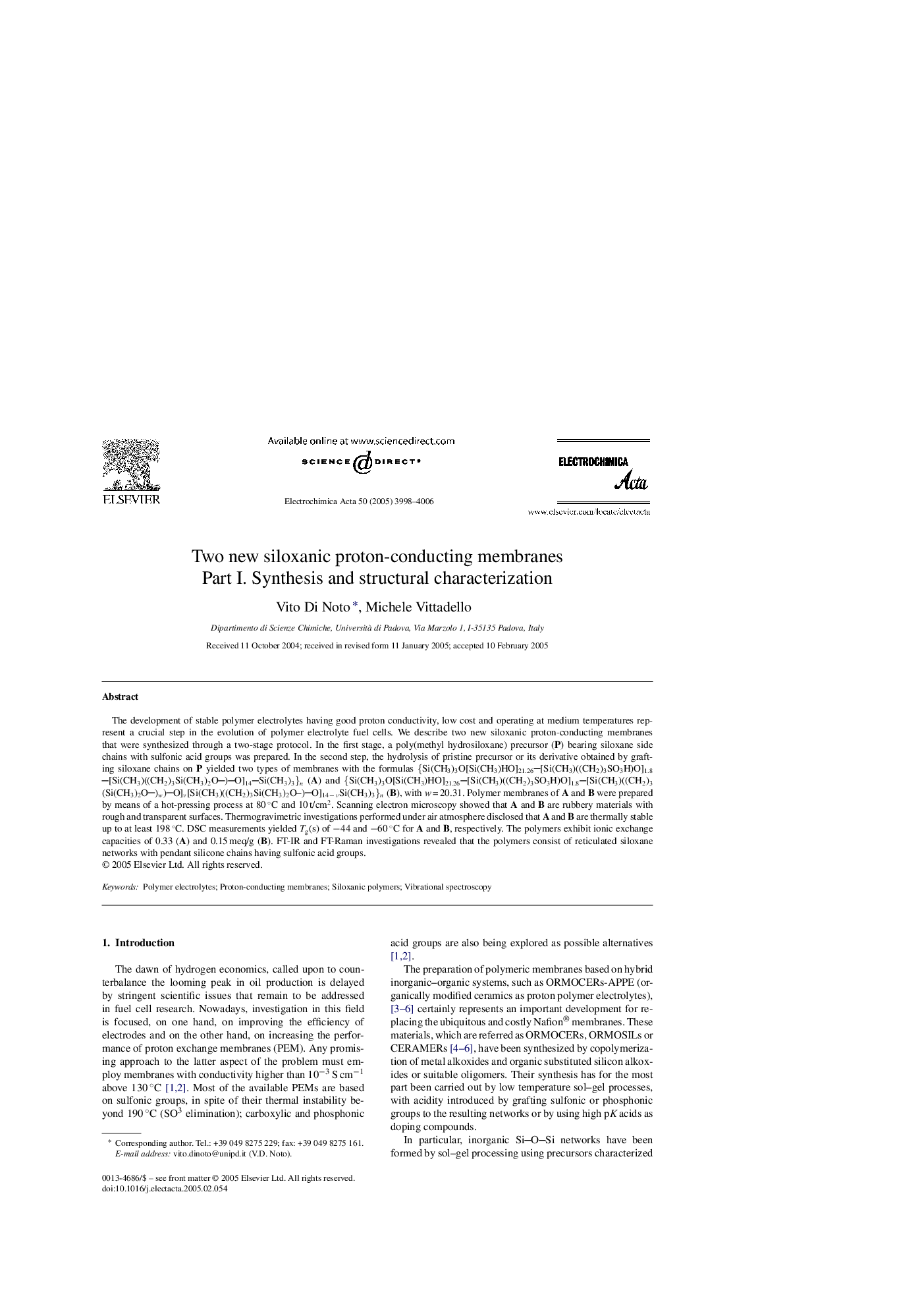| Article ID | Journal | Published Year | Pages | File Type |
|---|---|---|---|---|
| 195989 | Electrochimica Acta | 2005 | 9 Pages |
The development of stable polymer electrolytes having good proton conductivity, low cost and operating at medium temperatures represent a crucial step in the evolution of polymer electrolyte fuel cells. We describe two new siloxanic proton-conducting membranes that were synthesized through a two-stage protocol. In the first stage, a poly(methyl hydrosiloxane) precursor (P) bearing siloxane side chains with sulfonic acid groups was prepared. In the second step, the hydrolysis of pristine precursor or its derivative obtained by grafting siloxane chains on P yielded two types of membranes with the formulas {Si(CH3)3O[Si(CH3)HO]21.26[Si(CH3)((CH2)3SO3H)O]1.8[Si(CH3)((CH2)3Si(CH3)2O)O]14Si(CH3)3}n (A) and {Si(CH3)3O[Si(CH3)HO]21.26[Si(CH3)((CH2)3SO3H)O]1.8[Si(CH3)((CH2)3(Si(CH3)2O)w)O]v[Si(CH3)((CH2)3Si(CH3)2O–)O]14 − vSi(CH3)3}n (B), with w = 20.31. Polymer membranes of A and B were prepared by means of a hot-pressing process at 80 °C and 10 t/cm2. Scanning electron microscopy showed that A and B are rubbery materials with rough and transparent surfaces. Thermogravimetric investigations performed under air atmosphere disclosed that A and B are thermally stable up to at least 198 °C. DSC measurements yielded Tg(s) of −44 and −60 °C for A and B, respectively. The polymers exhibit ionic exchange capacities of 0.33 (A) and 0.15 meq/g (B). FT-IR and FT-Raman investigations revealed that the polymers consist of reticulated siloxane networks with pendant silicone chains having sulfonic acid groups.
